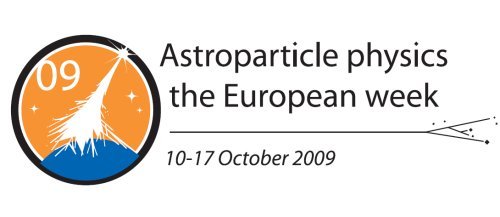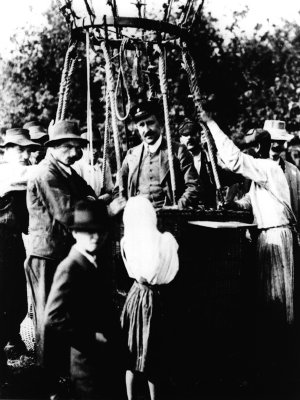
By Hamish Johnston
It seems that ASPERA has declared that the ‘European Week of Astroparticle Physics’ will begin on Saturday 10 October.
ASPERA is network of national government agencies responsible for coordinating and funding national research efforts in astroparticle physics. According to their press release:
“From 10 to 17 October 2009, in France, Italy, Spain and many other countries, astroparticle physicists will meet the public to reveal some of the most exciting mysteries of the Universe. Within the first European Week of Astroparticle Physics, they will organise about 50 events all over Europe: open days, talks for the general public, exhibitions…

Victor Hess and his prize-winning balloon
Sounds great, but “all over Europe” is a bit of an exageration. You can see a map of all the events here. There seems to be nothing going on in the UK, Portugal and Belgium, for example, which are all ASPERA members.
According to ASPERA it all began in 1909, when Theodor Wulf set out to measure radiation levels in the Netherlands, on top of the Eiffel Tower and in Swiss mountains — trying to detect a change in the levels with altitude.
The in 1912, Victor Hess ascended 5200 m in a balloon and demonstrated the
existence of radiation coming from the sky. He was awarded the Nobel Prize in 1936 for his discovery of cosmic rays.
Other Nobel Prizes associated with astroparticle physics include the 1995 award to Frederick Reines for the discovery of the neutrino — and Raymond Davis and Masatoshi Koshiba, who won in 2002 for detecting cosmic neutrinos from the Sun and from SN 1987A.
So what kind of festivities can we expect?
“Paris will honour astroparticle physics pioneers at the Montparnasse Tower – the highest building in Paris – which will become a real cosmic rays detector during the entire week,” accoding to ASPERA.
Meanwhile in the Czech Republic, the Netherlands, Poland, Romania and elsewhere, laboratories will put on special events for the public.
The festivities will begin a bit later in Rome, which will celebrate astroparticle physics with the opening on 27 October of a large exhibition dedicated to astroparticle physics called Astri e particelle. Le parole dell’ Universo. Held at the in Palazzo delle Esposizioni, it will highlight the challenges and techniques of astroparticle physics.
You can find out about more events here.



